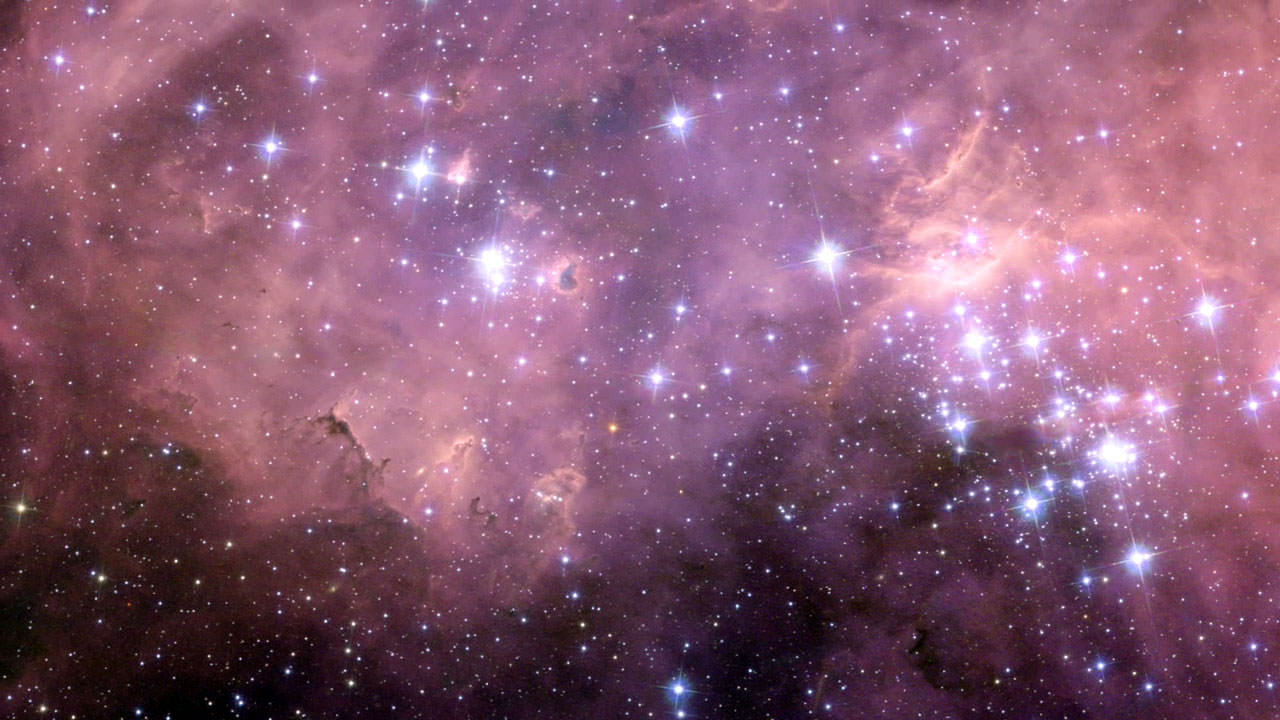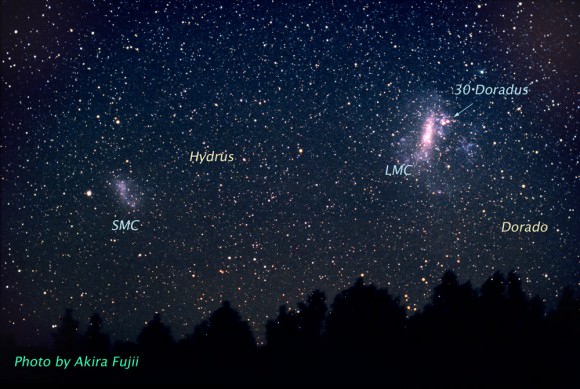[/caption]
Within the Large Magellenic Cloud is one of the most active star forming regions in our nearby Universe. This new Hubble image highlights N11 – also known as the Bean Nebula — a beautiful region of energetic star formation. The billowing pink clouds that look like cotton candy and bright bubbles of glowing gasses and are telltale signs that stars are being created. Click the image for a larger, hi-res version.
Beans, bubbles and candy aren’t the only terrestrial shapes to be found in this spectacular image from the Hubble Space Telescope.
If you zoom into upper left (click this link for a zoom video) you’ll find a rose: The Rose Nebula LHA 120-N 11A. Its rose-like petals of gas and dust are illuminated from within, thanks to the radiation from the massive hot stars at its centre. N11A is relatively compact and dense and is the site of the most recent burst of star development in the region.
If you live in the southern hemisphere, both the Large Magellanic Cloud and its small companion, the Small Magellanic Cloud, are easily seen with the unaided eye. That’s a sight I would someday love to see!
For more videos and images of this region, see this ESA Hubble page.



